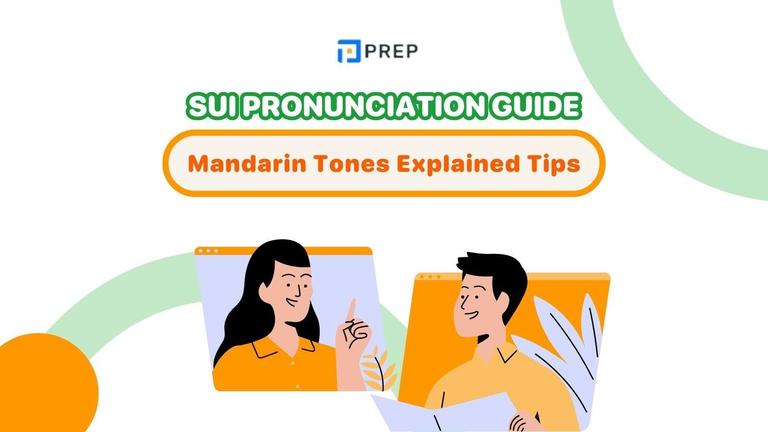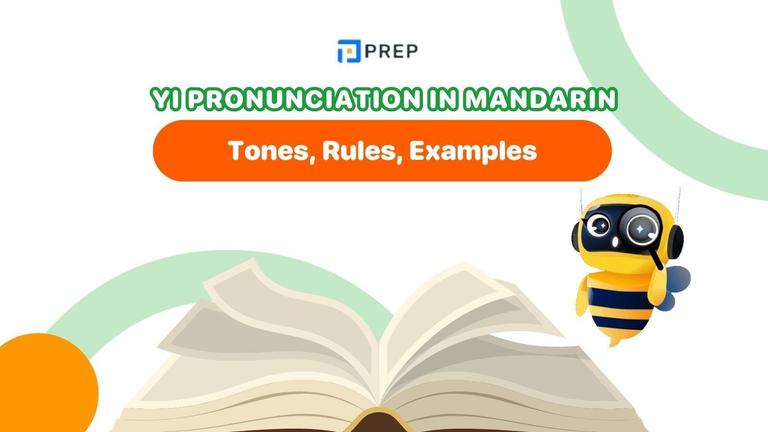Adjective Suffixes Explained: Easy Guide for Learners
Adjective suffixes are essential in building descriptive vocabulary in English. This guide explains the most common suffixes, their meanings, and how they change word forms. You’ll also find example-based tables, writing tips for exams, and practice exercises to master usage.

I. What Are Adjective Suffixes?
In English, suffixes are word endings that can change the meaning or grammatical function of a word. Adjective suffixes are specific types of suffixes added to nouns or verbs to form adjectives—words that describe or modify nouns. Understanding these suffixes is an essential part of expanding your vocabulary and using more precise, expressive language.

Here are a few commonly used adjective suffixes and what they typically mean:
- -ful (full of): hopeful, joyful
- -less (without): powerless, helpless
- -able / -ible (can be): readable, legible
- -ous (having the quality of): dangerous, generous
- -ive (tending to): active, protective
Adjective suffixes help you:
- Turn a base word into a descriptive word, such as: care → careful, help → helpful
- Express qualities, states, or attitudes, like in: value → valuable, hope → hopeless
By mastering adjective suffixes, you can enrich your writing and speaking, especially in academic and test settings like IELTS or TOEFL, where lexical variety and accuracy are key scoring criteria.
II. Adjective Suffixes List with Examples
Adjective suffixes allow us to form adjectives by adding endings to nouns or verbs. These suffixes give words descriptive meaning, allowing us to talk about qualities, conditions, abilities, or attitudes more precisely. Below is a categorized list of common adjective suffixes, including base words, newly formed adjectives, and example sentences to show usage in context.

1. Adjective Suffixes from Nouns
Adjective suffixes are often added to noun roots to describe a quality, characteristic, or relationship. By understanding common suffix structures, you can easily build a wide range of adjectives to enhance your vocabulary.
Common Suffix Patterns
|
Structure |
Function / Meaning |
Examples |
|
Noun + -ful |
Full of / having the quality of |
careful (from care), useful (from use) |
|
Noun + -less |
Without / lacking |
hopeless (from hope), powerless (from power) |
|
Noun + -ous / -ious |
Possessing a quality or nature of |
dangerous (from danger), ambitious (from ambition) |
|
Noun + -al / -ial |
Related to / connected with |
national (from nation), influential (from influence) |
|
Noun + -ic / -ical |
Describing nature, belonging or style |
dramatic (from drama), historical (from history) |
Note: Some suffixes like -ic vs. -ical or -ous vs. -ious may look interchangeable but often have distinct usage (e.g., economic ≠ economical).
Examples in Context
- Be careful when handling glass.
- Her advice was helpful during the discussion.
- This area becomes dangerous after dark.
- They felt hopeless about the situation.
- It's a national celebration observed yearly.
- Your explanation is not entirely logical.
Using adjective suffixes effectively makes your writing more concise and precise—an essential skill in academic essays, reports, and language exams.
2. Adjective Suffixes from Verbs
Many adjectives in English are formed by adding suffixes to verb roots. These adjective forms often express ability, tendency, responsiveness, or result, and are commonly used in academic writing and descriptions.
Common Suffix Patterns
|
Structure |
Function / Meaning |
Examples |
|
Verb + -able / -ible |
Can be / capable of |
breakable (from break), legible (from read) |
|
Verb + -ent / -ant |
Having a quality / performing an action |
different (from differ), reliant (from rely) |
|
Verb + -ive |
Tending to / having the nature of |
responsive (from respond), active (from act) |
Note: Some suffixes apply to both verbs and nouns, depending on the root word. For example: create → creative (verb); imagination → imaginative (noun).
Examples in Context
- This device is highly reliable and user-friendly.
- We need a more responsive support system.
- The notes are readable, but barely.
- She offered a different perspective on the issue.
- Handle with care – the material is breakable.
These adjective forms are especially useful in describing systems, behaviors, characteristics, and actions in formal or technical writing.
3. Negative or Contrast-Based Suffixes
Certain adjective suffixes are used to express absence, opposition, or a contrasting quality. These suffixes help create adjectives with negative meaning or imply the opposite of a base idea, and are especially valuable in persuasive or analytical writing.
Common Suffix Patterns
|
Structure |
Function / Meaning |
Examples |
|
Base word + -less |
Lacking / without |
hopeless (from hope), useless (from use) |
|
Base word + -ous / -ic |
Expressing a strong or contrasting quality |
nervous (from nerve), classic (from class) |
|
Prefix un- + adj |
Negation (opposite meaning) |
unattractive, unhelpful |
Note: While -ous and -ic are not always "negative" in meaning, they are often used to express intensity, contrast, or emotional emphasis. Prefixes like un- also function as negative modifiers but can combine with adjective forms.
Examples in Context
- She felt completely hopeless after the results.
- This tool is useless for detailed work.
- The speaker became visibly nervous on stage.
- It’s a classic mistake made by beginners.
- The design is outdated and unattractive.
These adjective forms are useful when expressing emotional tone, critique, or comparison, which are essential in tasks like essay writing, argumentation, and descriptive analysis.
III. Adjective Suffixes vs. Other Suffixes
In English word formation, suffixes play a key role in changing a word’s grammatical category. It's important to distinguish adjective suffixes from suffixes that form nouns, verbs, or adverbs, especially for learners preparing for academic writing or standardized exams.
Comparison Table: Adjective Suffixes vs. Other Suffixes
|
Suffix Type |
Function / Meaning |
Common Suffixes |
Examples |
|
Adjective suffixes |
Form adjectives from nouns or verbs to describe qualities, conditions, or characteristics |
-ful, -less, -ous, -ious, -able, -ible, -ic, -ical, -al, -ent, -ant, -ive |
careful, meaningless, dangerous, national, creative |
|
Noun suffixes |
Form people, objects, states, or abstract ideas |
-ness, -ity, -er, -or, -ment, -tion, -sion |
darkness, ability, teacher, achievement, action |
|
Verb suffixes |
Create verbs (actions or processes) from nouns/adjectives |
-ize, -ify, -en |
organize, clarify, strengthen |
|
Adverb suffixes |
Modify verbs, adjectives, or other adverbs |
-ly |
quickly, carefully, gradually |
Word Formation Examples
|
Base Word |
Adjective |
Noun |
Verb |
Adverb |
|
care |
careful / careless |
care / carefulness |
care (v) |
carefully |
|
hope |
hopeful / hopeless |
hope / hopelessness |
hope (v) |
hopefully |
|
act |
active |
action |
act (v) |
actively |
|
logic |
logical |
logic / logicity* |
— |
logically |
|
beauty |
beautiful |
beauty |
beautify |
beautifully |
Note: "Logicity" is rare/uncommon; used here for illustrative consistency.
How to Tell Them Apart
- Check the function of the word in the sentence:
- Describes a noun → Adjective (e.g., helpful article)
- Names an idea → Noun (e.g., helpfulness is important)
- Describes how an action is done → Adverb (e.g., speak helpfully)
- Look at suffix clusters that commonly belong to each word type (see examples above).
- Practice with word families: learn noun–verb–adjective–adverb forms together for better retention.
IV. How to Use Adjective Suffixes in Writing Effectively
Learning adjective suffixes is not just about word formation—it’s about applying them correctly to make your writing clearer, more descriptive, and academically precise. Here are several practical ways to use adjective suffixes effectively, especially in IELTS, TOEFL, or formal English writing.
Use Adjective Forms to Condense Meaning: Instead of using long relative clauses, replace them with adjectives derived from noun or verb roots.
- A person who helps → a helpful person
- A tool that has no use → a useless tool
- A nation with many laws → a legal system
This technique helps make your sentences more concise—an important skill in academic writing.
Describe People, Objects, and Abstract Ideas: Adjective suffixes allow you to express qualities and characteristics more precisely.
- People: responsible, ambitious, creative
- Objects: breakable, disposable, portable
- Concepts: meaningful, logical, political, economic
Example (IELTS Task 2): Technology provides innovative and affordable solutions to complex problems.
Convert Nouns/Verbs into Adjectives to Vary Sentence Structure: Using different word forms of the same base can help you avoid repetition and demonstrate lexical resource.
- success (noun) → successful (adj)
- rely (verb) → reliable (adj)
- influence (noun) → influential (adj)
Try restating ideas in different forms: The idea has gained influence → It has become increasingly influential.
Avoid Common Mistakes
- Don’t choose the wrong suffix: “responsible” is correct, “responsibleless” is incorrect.
- Not all words accept all suffixes: affordless is incorrect; the adjective form is affordable.
- Watch out for spelling changes: use → useful, but hope → hopeless (no double "e")
Practice in Context
Try the following learning routines:
- Write 5 sentences using new adjectives with suffixes.
- Replace long noun phrases with concise adjective phrases.
- Paraphrase statements using different adjective forms (e.g., danger → dangerous, create → creative).
By using adjective suffixes correctly, you make your writing more flexible, academic, and persuasive—especially in formal tasks like essays, reports, or applications.
V. Practice Exercises with Adjective Suffixes
Let's practice the following exercises to gain more knowledge about adjective suffixes!
Exercises
Exercise 1: Complete the sentence with the suitable adjective form
- The candidate had the_____(suit) skills and experience.
- The speaker ensured that her voice was clear and_____(audio).
- The garden was filled with vibrant flowers, creating a_____(beauty) atmosphere.
- The new product design was so_____(attract) to potential customers.
- Robert’s_____(observe) nature allowed him to notice the small details
Exercise 2: Match the following words with the appropriate adjective suffixes to form the correct adjectives
|
Word |
Adjective suffix |
|
|
Exercise 3: Choose the correct answer
-
The twins may look alike, but their personalities are quite_______.
A. Different
B. Difference
C. Differentiate
-
The museum displayed a vast collection of _______artifacts, offering visitors a glimpse into the rich and diverse past of the region.
A. History
B. Historical
C. Historic
-
The professor provided _______resources for the students, including extra reading materials and online tutorials.
A. Addition
B. Additionality
C. Additional
-
The smartphone has become an essential and _______tool, allowing people to stay connected, access information.
A. Useful
B. Usage
C. Useless
-
Following the safety guidelines is _______to ensure the well-being of all employees in the workplace.
A. Important
B. Unimportant
C. Importance
-
I thought she was the most ______woman I’d ever seen.
A. Beauty
B. Beautiful
C. Beautifully
-
Robert didn't seem very _______in what I was saying.
A. Interesting
B. Interested
C. Interest
Answer
|
Exercise 1 |
Exercise 2 |
Exercise 3 |
|
|
|
VI. Start Your IELTS Journey
Through this post, PREP hopes you have gained an understanding of 15 common English adjective suffixes. By familiarizing yourself with these suffixes, you can greatly expand your ability to describe and differentiate various qualities. Want to learn the secrets to IELTS success? Explore PREP, a powerful resource today.
IELTS online coaching: Score Big in IELTS With Our Expert Tips!

Hi I'm Chloe, and I am currently serving as an Product Content Administrator at Prep Education. With over five years of experience in independent online IELTS study and exam preparation, I am confident in my ability to support learners in achieving their highest possible scores.
Comment
Premium content
View allPersonalized roadmap
Most read












